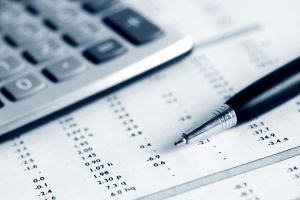
On the other hand, period costs are AI in Accounting not directly linked to the production process and are expensed in the period in which they are incurred. These costs are more administrative and selling expenses, such as office rent, utilities, and salaries of sales personnel. Understanding the temporal dimension of period costs is crucial for businesses as it influences decision-making and financial planning.
Difference Between Product Cost and Period Cost

Market research costs are incurred for market research, consumer surveys, focus groups, and competitive analysis to understand customer needs and preferences. It will keep accruing, and an entity will have to bear the same without profit or revenue. Time cost forms a significant portion of indirect costs, hence critical for running the business. To overcome these challenges, finance professionals should employ robust cost accounting systems, utilize appropriate cost allocation methods, and consider qualitative factors in their analyses. The financial advisor advises them to take a loan from a recognized financial institution as they would charge a lower interest rate. It was estimated that a rate of 10% would be required to pay $5.4 million annually (simple interest rule) and which they could capitalize on in the initial year.
Items That are Not Period Costs
- Advertising expenses can’t really be allocated to a specific manufacturing process or even a product.
- “Period costs” or “period expenses” are costs charged to the expense account and are not linked to production or inventory.
- Proper cost classification provides better financial analysis and supports decision-making on pricing products, controlling production costs, budgeting expenses, and evaluating departmental performance.
- For this reason, businesses expense period costs in the period in which they are incurred.
- According to generally accepted accounting principles (GAAPs), all selling and administrative costs are treated as period costs.
- Product costs (direct materials, direct labor and overhead) are not expensed until the item is sold when the product costs are recorded as cost of goods sold.
The advertising expense is recorded as a period cost in Q1, aligning with the accrual basis of accounting. Similarly, the salary of the CEO, who may strategize for long-term growth, is a period cost expensed in the period it is incurred, despite the benefits potentially materializing over several periods. Period costs are recorded as expenses in the accounting period they occur in, rather than being assigned to a specific product or inventory. This means they’re accounted for immediately, income statement without being tied to the cost of goods sold. Examples of indirect allocation bases include labor hours, machine hours, square footage, or production volume. Common methods of indirect allocation include the use of predetermined overhead rates or activity-based costing (ABC) systems.

Direct materials

These costs are integral to understanding the financial landscape of a company and require a what are period costs detailed examination to appreciate their role in accounting and management. Balancing product and period costs is important for your business performance efficiency. Product costs help you fine-tune the price of each item you sell, ensuring profitability. Period costs guide decisions about how to efficiently rule your small business realm to stay afloat, impacting staffing, advertising, and day-to-day operations. According to the Matching Principle, all expenses are matched with the revenue of a particular period.

What are the Examples of Period Costs?
Examining these costs carefully during the overall decision-making process is very important. If operations are halted, the firm will not incur enabling costs; nevertheless, if operations are resumed, the firm will incur them. Some will most likely be consistent across the whole output range, while others will likely fluctuate in steps. A single-shift operation, for example, may only require one departmental supervisor, whereas a second shift operation will necessitate the hiring of a second supervisor.
Cost of product vs period cost: reflecting costs in financial statements
When setting prices for products or services, businesses must ensure that all costs, including period costs, are covered to maintain profitability. This necessitates a thorough analysis of both direct and indirect expenses to determine the minimum price at which a product can be sold without incurring a loss. Period costs are systematically recorded in the income statement as expenses in the period they are incurred. This is in accordance with the matching principle of accounting, which dictates that expenses should be matched with the revenues they help to generate in the same period. If no direct connection to revenue can be established, the costs are recognized in the period they arise. For instance, office rent is recorded as an expense in the month it is paid, irrespective of the sales activities of that month.
